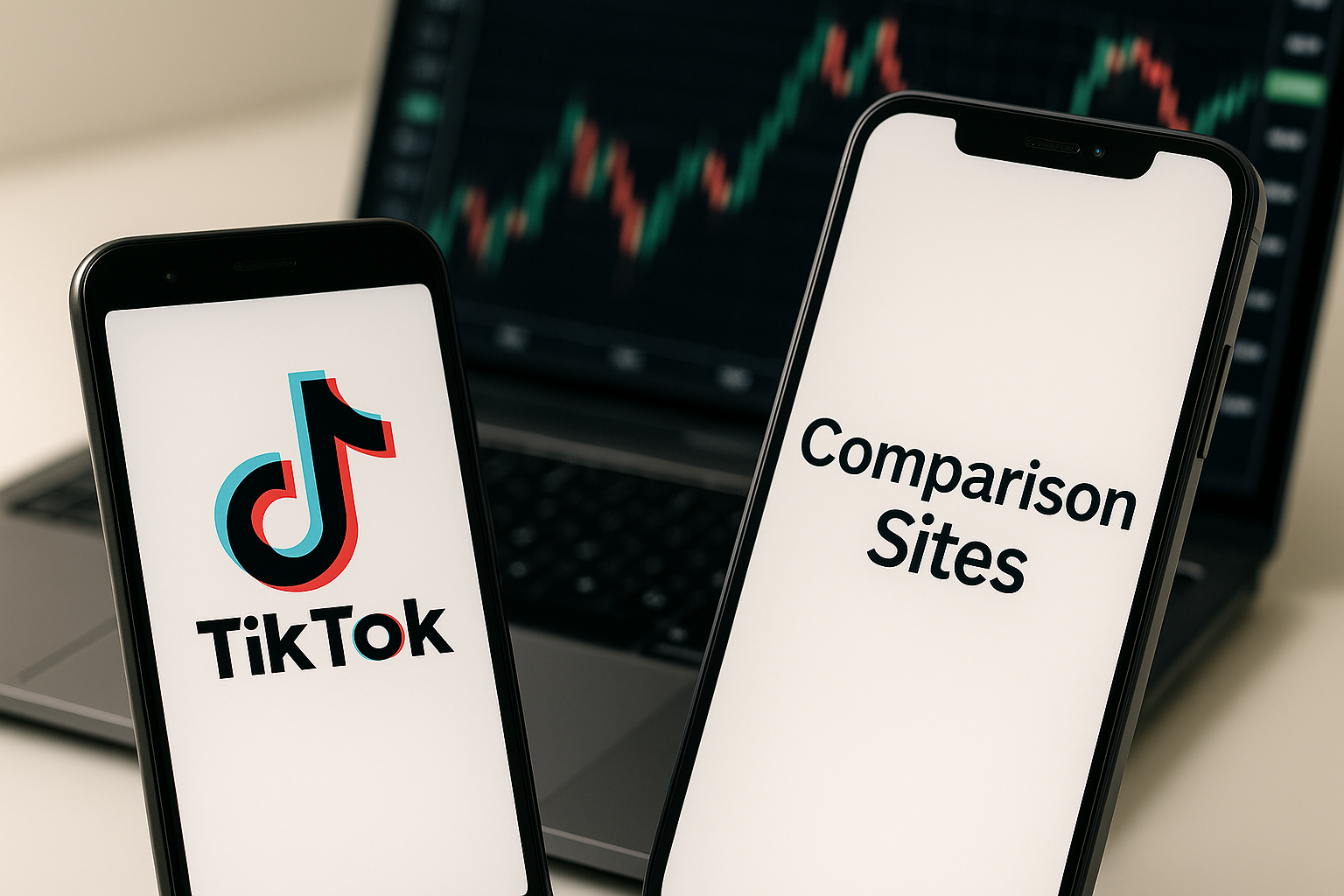
Analytica House
Mar 30, 2023Müşteri Segmentasyonunun Önemi

Günümüz pazarında ürünler ne kadar çeşitliyse, insanlarımızın da o kadar çeşitli olduğu söylenebilir. Nasıl ki ürünleri kategorilerine ve diğer özelliklerine göre ayırıp sınıflandırıyorsak, müşterileri de özelliklerine göre sınıflandırmak günümüz pazarlama sektöründe oldukça sık kullandığımız bir yöntem haline geldi.
Bu işleme müşteri segmentasyonu diyoruz; burada müşterileri demografik, coğrafi, psikografik ve davranışsal özelliklerine göre sınıflandırıyor ve bu sınıflara özel pazarlama stratejileri belirliyoruz. Peki, müşteri segmentasyonuna neden ihtiyaç duyuyoruz? Bize ne gibi faydalar sağlıyor? Segmentasyon türleri nelerdir ve hangi analizde hangi segmentasyon türü kullanılmalıdır? Gelin segmentasyonun önemini anlamak gibi birçok soruya birlikte cevap verelim.
.png)
Müşteri Segmentasyonu Nedir?
Müşteri segmentasyonu, bir müşteri veri kümesini yaş, cinsiyet, ilgi alanları ve harcama alışkanlıklarına göre benzer bireylerden oluşan gruplara ayırma uygulamasıdır. Şirketler ayrıca her segmentin en değerli bulduğu şeyleri anlamaya çalışır, böylece pazarlama materyallerini o segmente daha doğru şekilde kullanabilir ve pazarlama stratejilerini buna göre geliştirebilirler.
Her şirketin milyarlarca hatta trilyonlarca verisi vardır. Ancak, bu veriler istatistiksel analiz yardımıyla anlamlı bilgiye dönüştürüldüğünde harekete geçmek mümkün olur. Bir işletmenin müşterisini tanıması ve ihtiyaçlarını bilmesi, daha etkili pazarlama için çok önemli bir faktördür. Bu nedenle veri bilimi, milyarlarca hatta trilyonlarca müşteri verisini analiz edip anlamlı sonuçlar çıkarmada çok önemli bir rol oynar.
Müşteri segmentasyonu, ayrıca işletmenin hizmet veya ürünlerini kimlerin aldığını ve kimlerin alacağını bu akıp giden milyarlarca veri arasından anlamak için kullanılan bir yöntemdir.
Kullanıcı Segmentasyonu Türleri
- Coğrafi müşteri segmentasyonu: Coğrafi tüketici segmentasyonu, kitleleri bulundukları yere (ülke, eyalet, şehir veya kasaba) göre ayırır. Bu segmentasyon tekniği, yerel SEO ve pazar genişlemesi için faydalıdır.
- Demografik müşteri segmentasyonu: Kitlelerin yaş, cinsiyet, medeni durum, eğitim düzeyi ve gelir gibi özelliklere göre gruplandırılması demografik müşteri segmentasyonu olarak bilinir. Bu parametrelerdeki farklılıklar satın alma alışkanlıklarının güçlü birer göstergesi olduğundan, en faydalı segmentasyon türlerinden biridir.
- Psikografik müşteri segmentasyonu: Psikografik tüketici segmentasyonu, yaş veya cinsiyet gibi daha temel özelliklerden ziyade kişilik, tutum, hobiler ve değerler gibi özelliklere odaklanır. Kullanıcıların satın alma davranışlarını etkileyen psikolojik özellikler psikografik segmentasyonda detaylıca incelenir.
- Davranışsal müşteri segmentasyonu: Müşteriler davranışlarına göre segmentlere ayrıldığında, ürün kullanımı, eğilimler ve alışveriş tercihleri (örneğin mağazadan ya da çevrimiçi) gibi faktörler dikkate alınır.
.png)
Kullanıcı Segmentasyonunun Faydaları
Farklı müşteri segmentleri oluşturarak, bu segmentlere uygun ideal ürün kolayca seçilebilir ve işletmeye uygun dağıtım kanalları kolayca belirlenebilir. Başarılı bir müşteri segmentasyonu stratejisine sahip olmak, işletmenin müşterileri daha derinlemesine anlamasına ve onlar için pazarlama stratejileri geliştirmesine olanak tanır.
Yaş, konum, satın alma alışkanlıkları ve ilgi alanları gibi özelliklere dayalı olarak, en kârlı müşterilere yönelik çalışmaları yönlendirmek kolaylaşır; böylece doğru kitleyi çekmek için doğrudan pazarlama stratejileri belirlenebilir.
Kullanıcı Segmentasyonu Nasıl Uygulanır?
Müşteri segmentasyonunun en zor yönlerinden biri, büyük bir veri kümesinden en faydalı segmentleri oluşturacak verilerin hangileri olacağını seçmektir. Bu nedenle, başarılı bir müşteri segmentasyonu için stratejik bir yol haritasına ihtiyaç vardır.
- Pazarın belirlenmesi:
Bu süreç, rekabetten nasıl ayrışacağınızı ve ürünlerinizin tüketici talebini karşılamak için gerekli niteliklere sahip olup olmadığını öğrenmenize yardımcı olacaktır. - Segmentasyon türünün seçilmesi:
Şirketinizin hedeflerine en iyi hizmet eden segmentasyon stratejisini seçin. Bunu yapmak için müşteri verilerini toplamanız, paydaşları segmentlere ayırmanız ve olası segmentleri doğrulamak için kriterlerde uzlaşmanız gerekir. - Müşterilerin ihtiyaç ve tercihlerinin anlaşılması:
Doğru soruları sormak, müşterilerinizin ilgi alanlarını, beğenilerini ve isteklerini ayrıntılı olarak anlamanıza yardımcı olur, böylece onlara başarılı bir şekilde hitap edebilirsiniz. - İşletmeniz için ideal müşteri segmentinin belirlenmesi:
Müşteri segmentasyonu çalışmalarınızın başarılı olması için, müşterilerinizin çoğunluğunu kapsayan basit bir grup düşünmeniz gerekir; bu sayede onların ihtiyaçlarını belirleyebilir ve ürünlerinizi kabul ettiklerini doğrulayabilirsiniz. - Segmentasyonun etkinliğinin kontrol edilmesi:
Bu adım, belirlediğiniz pazar segmentasyonu stratejilerini doğru müşterilerle test etmeyi ve düzeltilmesi gereken noktaları belirlemeyi içerir. - Hedef segmentlerin tanımlanması:
Şirkete en yüksek kârı getirme olasılığı en yüksek olan grupları seçin. - Ürün konumlandırma stratejisinin geliştirilmesi:
Konumlandırma, şirketin pazarda rekabet avantajlı konumunu tanımlamasına olanak tanıyan pazarlama sürecidir. Doğrudan ve dolaylı rakipleri keşfetmeye yardımcı olur. Bir tüketicinin şu sorulara yanıt bulmasını sağlar;
- Bu ürün kimin için?
- Ürün hangi müşterinin ihtiyaçlarını karşılayabilir?
- Şirketinizin ürünü rakiplerin ürünlerinden nasıl farklılaşıyor?
- Tüketici için ürününüzü satın almak neden kârlıdır?
- Müşteri ürününüzü ne zaman kullanmalı? - Her hedef segment için bir pazarlama planı oluşturma:
Her segment için, şirket görevlerinizi yerine getirmenizi sağlayacak adım adım bir strateji oluşturun. Strateji gerçekçi olmalı ve olası zorlukları hesaba katmalıdır.
.png)
Tekniğin Gerçek Hayattaki Uygulamaları
Hedef kitlenizi medeni durum, ilişki süresi, aile büyüklüğü ve çocuk yaş aralıkları gibi faktörlere göre hedeflemek de kitlenizi segmentlere ayırmanın harika bir yoludur. Satın alma alışkanlıklarımız hayatımızın hangi aşamasında olduğumuza bağlıdır. Ebeveynler çocukları için alışveriş yapar. Yaşlanan ebeveynlerine bakan baby boomer kuşağı birçok alışveriş yapar.
Geçmiş satın alma bilgilerine dayalı olarak müşterileri ilgili veya tamamlayıcı ürünlerle yeniden hedefleyebilirsiniz. Bu verileri kullanarak başarılı çapraz satış ve yukarı satış kampanyaları başlatabilirsiniz. Örneğin, telefon aksesuarları satıyorsanız, kitlenizin farklı segmentlerini kullandıkları telefon türlerine göre teklifler ile hedefleyebilirsiniz. Ürününüz cihaz türüne göre farklı kullanılmıyorsa, insanların farklı cihazlarla alışveriş yapma biçimlerinde herhangi bir eğilim olup olmadığını görmek için verilerinize bakın.
Ayrıca, lüks yaşam tarzıyla ilgilenen ve son 30, 60 veya 90 gün içinde yüksek fiyatlı satın alımlar yapma eğilimi gösteren potansiyel müşterileri hedeflemek için de kullanabilirsiniz. Bu ayarlar ve hedef segmentler kullandığınız platforma bağlı olarak belirlenebilir.
Sonuç
Müşterilerinizin taleplerini ve endişelerini doğru bir şekilde tanımlamanız gerekir ki bu ihtiyaçları karşılayıp sonunda onların memnuniyetini kazanabilesiniz. En iyi müşteri segmentasyonu stratejisini kullanmanızın satış, pazarlama, ürün geliştirme, müşteri hizmetleri vb. işinizin tüm yönleri üzerinde önemli bir etkisi olabilir. Şirketiniz, pazarı daha net anlayarak ve müşteriye daha fazla odaklanarak daha öngörülebilir ve verimli şekilde büyüyebilecektir.
Kaynakça
- https://www.euromsgexpress.com/musteri-veri-segmentasyonu-nedir/?psafe_param=1&gclid=CjwKCAiAu5agBhBzEiwAdiR5tPFa3xg05HuyEqbckfrr1EcVp9sWw5MPNhxGUZ0EIcm5enHaczaYJRoCKZMQAvD_BwE
- https://porsline.com/blog/tr/musteri-segmentasyonu-neden-ve-nasil-yapmaliyiz/
- https://business.adobe.com/blog/basics/real-world-examples-of-customer-segmentation
- https://www.tani.com.tr/blog/musteri-analitiginin-sihirli-kavrami-musteri-segmentasyonu
- https://www.ticimax.com/blog/musteri-segmentasyonu-ile-hedef-kitlenizi-nasil-tanirsiniz
- https://netuce.com/musteri-segmentasyonu-nedir-nasil-yapilir/
- https://sendpulse.com/tr/knowledge-base/email-service/general/how-segment-customers
- https://www.mayple.com/blog/customer-segmentation-examples#:~:text=If%20you%20sell%20phone%20accessories,trends%20based%20on%20different%20devices.
- https://openviewpartners.com/blog/customer-segmentation/
More resources

Veri Odaklı Black Friday: Satışları Artıran Stratejiler ve Araçlar
Veri odaklı Black Friday stratejileri, e-ticaret sitelerinin satışlarını artırmada en önemli anahtar...

Finans Sektöründe TikTok ve Karşılaştırma Siteleri
Finans sektöründe alternatif kanalların sunduğu fırsatlar giderek artıyor, TikTok ve karşılaştırma s...

Kullanıcı Deneyimi (UX) ve CRO İlişkisi
Dönüşüm oranlarını artırmak isteyen birçok ekip, reklam bütçesini yükseltmeye ya da yeni kampanyalar...

